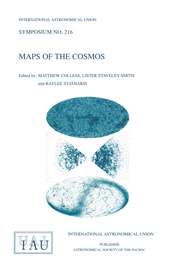No CrossRef data available.
Article contents
Stellar populations in starburst galaxies
Published online by Cambridge University Press: 25 May 2016
Abstract
Many galaxies emit a dominant fraction of their bolometric luminosity in the infrared. The small mass-luminosity ratios suggest that these infrared luminosities cannot be sustained by a normal stellar population over a Hubble time. The commonly held explanation is that there has been a burst of star formation sufficiently recently that the full spectrum of the initial mass function up to the highest mass stars is contributing to the luminosity. Starburst galaxies therefore provide laboratories for studying the upper end of the initial mass function.
After a briefly summarizing studies of the IMF in the solar neighborhood and in nearby ‘normal’ galaxies, I will turn to studies of environments in which there appears to be evidence for a somewhat different IMF, viz., in starburst galaxies. I will discuss infrared spectroscopic diagnostics of a sample of the most luminous starburst galaxies and what this implies for the IMFs in these ‘violent’ star formation events.
- Type
- Part 5. Wolf-Rayet stars and other massive stars in starburst galaxies: the case of Wolf-Rayet galaxies (integrated spectra)
- Information
- Copyright
- Copyright © Astronomical Society of the Pacific 1999


